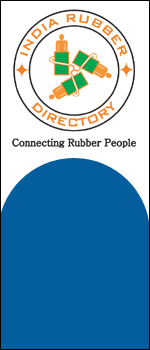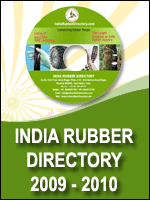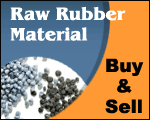| Subject Q1) What
is a Patent?
A Patent is an exclusive monopoly granted by the Government to an
inventor over his invention for limited period of time.
Subject Q2) Who can obtain a Patent?
An inventor or any other person/company assigned by the inventor can
obtain the patent over his invention.
Subject Q3) How a patent is obtained/filed?
A patent is obtained by the inventor or his assignee by filing an
application with the patent office in the stipulated forms as required
by the Patent act of that country.
Subject Q4) Why one should go for a patent?
To enjoy the exclusive rights over the invention. If the inventor
does not get the patent rights over his invention and introduce his
product/process based on his invention in the market, any body can copy
his invention and exploits it commercially. To debar others from using,
selling or working out his invention, the inventor must go for getting a
patent.
Subject Q5) Why does the Government encourage
filing of patents?
To encourage innovation and investment in the research and
development activities so that there is economic,industrial and
technological development in the country.
Subject Q6) How does a patent document help in
R&D?
Study of a Patent document may stop re-inventing the wheel. A
scientist, who has not consulted the patent literature, may start
working on a problem for which the solution might have already been
found by someone else and it is available inn the patent literature.
Subject Q7) Which invention qualifies for the
grant of a patent?
A patent is granted only on that invention, which is new, non-obvious
and has industrial applicability.
Subject Q8) Upto what extent the inventor has to
disclose his invention to get a patent?
An inventor has to disclose his invention in such a manner that any
person, other than the inventor, skilled in the art should be able to
work out the invention.
Subject Q9) How does a patent get expire?
A patent can expire in the following ways: 1. The patent has lived
its full term i.e. the term specified by the patent act of the country.
Generally it is 20 years from the date of filing. 2. The patentee hs
failed to pay the renewal fee. A patent once granted by the Government
has to be maintained by paying annual renewal fee. 3. The validity of
the patent has been successfully challenged by an opponent by filing an
opposition either with the patent office or with the courts.
Subject Q10) What is the different between a US
patent and an Indian Patent?
A US patent is granted by the United State Patent Office to an
inventor, who has filed his application with it, whereas an Indian
Patent is granted by the Indian Patent Office to an inventor, who has
filed his application with Indian Patent office.
A patent granted by a patent office is applicable within the
geographical boundaries of that country only.
A US Patent is applicable within USA only and has no effect in India,
if the same inventor of the US patent has not filed his application in
India for the patent grant.
Subject Q11) Is there an International/Global
patent?
No. There is no International or Global Patent. An inventor has to
file an application in each country, where he seeks to protect his
invention. There are regional and/or International treaties to
facilitate the procedure to seek protection like Patent co-operation
Treaty (PCT) or European Patent Convention (EPC)
Subject Q12) Who checks the novelty features of
the invention?
A patent examiner checks the novelty features of the patent
application with the state of the art available.
Subject Q13) Can a scientist get a patent on
the invention, which he has already published in the form a paper in a
national/International journal?
No. A patent is not granted to an invention if it is already
available with the public either in the form of published literature of
common knowledge.
Subject Q14) Who is responsible to ensure that
the patent has not been infringed?
It is the sole duty/responsibility of the patentee to see that his
patent is not being infringed upon by someone else. It is the patentee's
duty to file a suit of infringement against the infringer.
Subject Q15) Does a Patentee get money once a
patent has been granted to him?
No. A patentee does not get any kind of money over the grant of the
patent. However, when a patentee sells his patented invention to a third
party, he gets money. The patentee has all the rights to sell his
invention exclusively and/or non-exclusively to any person/party or he
may choose to sell his invention for a royality.
The granting authority will not give any money to the patentee.
Rather the inventor has to spend lot of money to get the patent rights
over his invention and also to spend lot of money to maintain his
patent.
Subject Q16) What does a patent application
contain?
A patent application has the following information:
1. Bibliographic: It is in structure format. It contains the title of
the invention, date of filing, country of filing, inventor's name etc.
2. Background of the invention or State of the art: In this the
inventor lists the state of the art available on the date of filing his
invention. Here the inventor lists the shortcomings/drawbacks found in
the state of the art and defines his problem.
3. Description of the invention: In this the inventor describes his
invention duly supported by a series of workable examples alongwith
diagrams/charts, if needed. The invention has to be described in
complete details, so that any person, who is skilled in the art can work
out the invention.
4. Claims: In the last, the inventor has to bring out a series of
claims establishing his rights over the state of the art. It is this
portion, upon which the protection is granted and not on the description
of the invention. This has to be carefully drafted.
Subject Q17) Who should draft the patent
application?
Though the inventor himself can draft the application, it is
desirable that a patent attorney should be hired to do this job. A look
on the closely related patent applications already filed/granted, will
render help to a great extent.
Subject Q18) When one should access the patent
literature?
Before the start of the research and development project or when
stuck up with a technical problem. 80% of the literature covered in the
patent documents is never published in any scientific and technical
journal. Patent literature is the goldmine of information.
Subject Q19) Why one should access the patent
literature?
Before the start of the research and development project, one should
scan the patent literture to stop re-inventing the wheel
or
during the development phase, when stuck up with a technical problem,
to find a technical solution.
or
once the research is complete i.e. at the time of filing the patent
application, to narrow down or broaden the claims and/or to draft the
application for getting a patent.
Subject Q20) Which are the main sources for
patent information?
National Patent offices, International Information vendors like
Dialog, Orbit, Questel STN, free or charge based patent web sites on
Internet.
Subject Q1) What is a Patent?
A Patent is an exclusive monopoly granted by the Government to an
inventor over his invention for limited period of time.
Subject Q2) Who can obtain a Patent?
An inventor or any other person/company assigned by the inventor can
obtain the patent over his invention.
Subject Q3) How a patent is obtained/filed?
A patent is obtained by the inventor or his assignee by filing an
application with the patent office in the stipulated forms as required
by the Patent act of that country.
Subject Q4) Why one should go for a patent?
To enjoy the exclusive rights over the invention. If the inventor
does not get the patent rights over his invention and introduce his
product/process based on his invention in the market, any body can copy
his invention and exploits it commercially. To debar others from using,
selling or working out his invention, the inventor must go for getting a
patent.
Subject Q5) Why does the Government encourage
filing of patents?
To encourage innovation and investment in the research and
development activities so that there is economic,industrial and
technological development in the country.
Subject Q6) How does a patent document help in
R&D?
Study of a Patent document may stop re-inventing the wheel. A
scientist, who has not consulted the patent literature, may start
working on a problem for which the solution might have already been
found by someone else and it is available inn the patent literature.
Subject Q7) Which invention qualifies for the
grant of a patent?
A patent is granted only on that invention, which is new, non-obvious
and has industrial applicability.
Subject Q8) Upto what extent the inventor has to
disclose his invention to get a patent?
An inventor has to disclose his invention in such a manner that any
person, other than the inventor, skilled in the art should be able to
work out the invention.
Subject Q9) How does a patent get expire?
A patent can expire in the following ways:
1. The patent has lived its full term i.e. the term specified by the
patent act of the country. Generally it is 20 years from the date of
filing.
2. The patentee hs failed to pay the renewal fee. A patent once
granted by the Government has to be maintained by paying annual renewal
fee.
3. The validity of the patent has been successfully challenged by an
opponent by filing an opposition either with the patent office or with
the courts.
Subject Q10) What is the different between a US
patent and an Indian Patent?
A US patent is granted by the United State Patent Office to an
inventor, who has filed his application with it, whereas an Indian
Patent is granted by the Indian Patent Office to an inventor, who has
filed his application with Indian Patent office.
A patent granted by a patent office is applicable within the
geographical boundaries of that country only.
A US Patent is applicable within USA only and has no effect in India,
if the same inventor of the US patent has not filed his application in
India for the patent grant.
Subject Q11) Is there an International/Global
patent?
No. There is no International or Global Patent. An inventor has to
file an application in each country, where he seeks to protect his
invention. There are regional and/or International treaties to
facilitate the procedure to seek protection like Patent co-operation
Treaty (PCT) or European Patent Convention (EPC)
Subject Q12) Who checks the novelty features of
the invention?
A patent examiner checks the novelty features of the patent
application with the state of the art available.
Subject Q13) Can a scientist get a patent on
the invention, which he has already published in the form a paper in a
national/International journal?
No. A patent is not granted to an invention if it is already
available with the public either in the form of published literature of
common knowledge.
Top
Subject Q14) Who is responsible to ensure that
the patent has not been infringed?
It is the sole duty/responsibility of the patentee to see that his
patent is not being infringed upon by someone else. It is the patentee's
duty to file a suit of infringement against the infringer.
Subject Q15) Does a Patentee get money once a
patent has been granted to him?
No. A patentee does not get any kind of money over the grant of the
patent. However, when a patentee sells his patented invention to a third
party, he gets money. The patentee has all the rights to sell his
invention exclusively and/or non-exclusively to any person/party or he
may choose to sell his invention for a royality.
The granting authority will not give any money to the patentee.
Rather the inventor has to spend lot of money to get the patent rights
over his invention and also to spend lot of money to maintain his
patent.
Subject Q16) What does a patent application
contain?
A patent application has the following information:
1. Bibliographic: It is in structure format. It contains the title of
the invention, date of filing, country of filing, inventor's name etc.
2. Background of the invention or State of the art: In this the
inventor lists the state of the art available on the date of filing his
invention. Here the inventor lists the shortcomings/drawbacks found in
the state of the art and defines his problem.
3. Description of the invention: In this the inventor describes his
invention duly supported by a series of workable examples alongwith
diagrams/charts, if needed. The invention has to be described in
complete details, so that any person, who is skilled in the art can work
out the invention.
4. Claims: In the last, the inventor has to bring out a series of
claims establishing his rights over the state of the art. It is this
portion, upon which the protection is granted and not on the description
of the invention. This has to be carefully drafted.
Subject Q17) Who should draft the patent
application?
Though the inventor himself can draft the application, it is
desirable that a patent attorney should be hired to do this job. A look
on the closely related patent applications already filed/granted, will
render help to a great extent.
Subject Q18) When one should access the patent
literature?
Before the start of the research and development project or when
stuck up with a technical problem. 80% of the literature covered in the
patent documents is never published in any scientific and technical
journal. Patent literature is the goldmine of information.
Subject Q19) Why one should access the patent
literature?
Before the start of the research and development project, one should
scan the patent literture to stop re-inventing the wheel
or
during the development phase, when stuck up with a technical problem,
to find a technical solution.
or
once the research is complete i.e. at the time of filing the patent
application, to narrow down or broaden the claims and/or to draft the
application for getting a patent.
Subject Q20) Which are the main sources for
patent information?
National Patent offices, International Information vendors like
Dialog, Orbit, Questel STN, free or charge based patent web sites on
Internet.
|
























